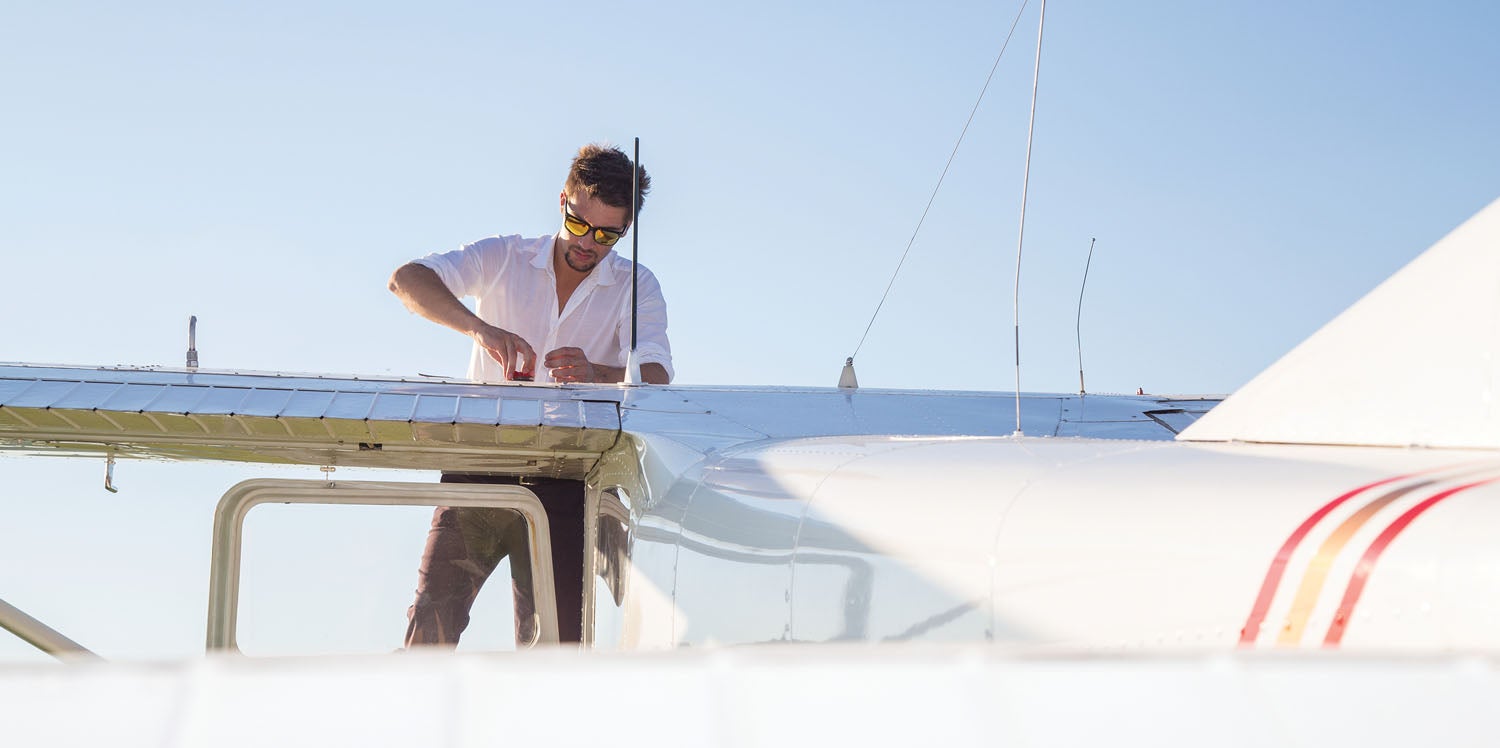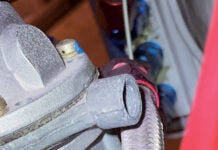
It had to happen. Ever since leaded automotive fuel was phased out in the 1970s, there’s been talk about getting the lead out of avgas as well. More recently, we’ve been through several efforts to define a replacement for 100-octane leaded fuel, but now one California county is attempting to force the issue by banning the sale of leaded fuel at the Reid-Hillview airport. (As of mid-January, flight planning resources show 100LL as not available, though 94UL is.) The county’s move received a rapid response from industry groups, including AOPA, which described the move as “reckless” and “politically motivated.” The county’s actions are, in my view, consistent with its larger plan to force the closure of Reid-Hillview. The value of land has skyrocketed in this part of California since Amelia Reid plied her craft against the golden hills of Santa Clara county.
For the moment, the skirmish is limited to KRHV, but we’d be fools to think other municipalities aren’t watching what happens, especially those whose airports were built long before the surrounding communities became a thing and now see this “egregious” use of land as a waste of potential tax revenue. Airports have enough challenges from land use and noise as it is; we don’t need a public panic about “deadly” leaded fuel.
No Easy Solutions
But here’s the deal: lead is a monstrously effective octane booster. Other concoctions used to raise octane to meet the current spec tend to have some negative characteristics. You could have materials incompatibility, problems with vapor pressure or other factors that make 100LL alternatives unsuitable. At the moment, two fuels stand out as viable replacements: GAMI’s and Swift’s. More on that in a second.
It’s easy to consider 94UL, which is essentially our current 100LL fuel without the tetraethyl lead, a viable stand-in. But it’s not, not quite. Those of you well-aged pilots will remember when FBOs had multiple tanks and various-octane fuels to purchase. Where once there was a choice of 80/87 (that’s the lean versus rich rating) or 100/130, the industry gradually switched over to a single solution, the so-called “low lead” 100/130, which we know as 100LL. By this time, many FBOs and airports chose to refine their tankage—in some cases, they were often forced to by local laws on the storage and handling of gasoline—and nearly all consolidated to one system for one fuel. Ask your airport manager if it makes sense to install a second set of tanks and how long it’ll take to recoup the investment. You’ll get a blank stare.
Then, as now, there was a great disparity in aircraft needs. According to AOPA’s own numbers, some 75% of the current fleet can use a fuel less resistant to detonation than 100LL. In fact, these lower-compression, non-turbocharged engines would be much happier without the lead at all, and in places where the 94UL alternative is available, it’s a good choice for these engines.
But here’s the rub: The 25% of the fleet that needs, absolutely needs, a 100-octane fuel consumes some 75% of the volume each year. We’re talking big turbocharged piston engines in commuter and freight applications. The number of RVs far outstrips the fleet of 400-series Cessna twins, for example, but those twins fly every day, all day at nearly 40 gph in cruise. What those Cessnas suck down in a day takes your average RV a quarter of a year to burn.
Where We Are Now
GAMI’s G100UL fuel was approved as of last summer and can be used with an STC for a limited number of Lycoming engines and Cessna airframes. I’ve seen the data created by the extensive detonation testing by GAMI, and it’s impressive. If anything, the turbo-normalized Continental 550 engines were happier on G100UL than a standard-spec 100LL, and they represent something of a worst-case scenario for detonation. Our engines, even your fire-breathing, 10.0:1 hot rod, should be free of detonation with the G100UL. (Full disclosure, I was provided a full tank of early G100UL to test in my Sportsman more than a decade ago. It worked splendidly, though 50 gallons is hardly a viable data set of long-term effects.) Swift has developed 94UL, of course, and continues work on a “drop-in” replacement. Shell is also hard at work on a replacement, but there appear to be some material-compatibility issues yet to be resolved.
And there’s your problem. There is no easy solution to finding one fuel that works on everything from Ercoupes to Piper Navajos. Worse, the FAA’s Piston Aviation Fuels Initiative (PAFI) that was coordinating development of an unleaded alternative is, by decree, unable to discuss progress. So we live in the dark.
The events at Reid-Hillview should remind us that the clock is really, no-joke ticking on 100LL. If the EPA finally issues a Finding of Endangerment related to leaded fuels, the alarm will go off, and we’ll have to face the consequences of a suddenly accelerated timeline. That’s no way to wake up.
Program Notes
You may notice a few tweaks to our content over the next few months. For starters, Dave Prizio, who has penned our Maintenance Matters section for a very long time, has asked for a break from the monthly grind—and who can blame him? So we’ll be giving that column a rest for now, though we’ll continue to cover engine- and airframe-maintenance topics while he’s resting.
In the coming months, you’ll also see more of Vic Syracuse; in addition to his “Unairworthy” and “Checkpoints: Diagnosis” contributions, he’ll be chiming in with other commentary and an ongoing build series. (I’ll let the subject of that series be a surprise.) Also, you’ll see more of Gabriel DeVault, whose electric Xenos motorglider graced our cover some months ago; his perspective on working with electric propulsion is an important part of that category’s progress. It’s one thing to speak conceptually about electric aircraft, as we have done for more than a decade, but I think his hands-on experience is hugely valuable.
Reader Feedback
David Howe commented on Bob Hadley’s “Toe Bar” article in the February issue. “You made a photo caption comment about using only ‘raw’ plain steel fasteners for welding so as not to gas off toxic fumes. I’m sure you know this and just elected not to include it, but pool ‘service’ strength muriatic acid removes most commercially applied protective coatings, including cadmium plating.
“This feature simplifies the selection process to almost whatever is in your inventory. As a longtime TIG welder, I have a gallon of it on hand and probably use it a couple of times a week to get materials ready to weld. Another advantage of the ‘raw’ surface condition is the absence of contamination potential. TIG welds, as you are well aware of, hate contamination.”














Why are the high horsepower engines reliant on 100LL while the lower hp ones can use mogas? If a 160hp Lyc O-320 has an 8.5:1 CR and the 310hp Cont IO-550N in the Cirrus also has 8.5:1 CR why can’t both use the same fuel? If we had liquid-cooled engines this octane discussion wouldn’t be happening.
Well, there’s more to it than just compression ratio, though that’s often one of the main determiners. Any given engine’s resistance to detonation depends on many factors, including BMEP (brake mean effective pressure), typical or max cylinder-head temps, ignition timing, etc. They are all closely interrelated.
As you say, liquid cooling would help a great deal, since the engine and airframe people have to balance max CHTs in operation with acceptable airframe drag. By doing what Rotax has done with the 91x series, where only the most critical parts of the engine are liquid cooled, you could make real headway on detonation tolerance and the ability to use lower-octane fuels.
There are two primary factors for fuel: Detonation resistance and vapor pressure. If you have a low enough compression ratio you can run lower octane fuel without it suddenly combusting against the piston, but once you have high compression or a turbo, you must run fuel that resists combusting until the ignition system lights it off. Most people understand these points.
The lesser understood issue is vapor pressure. The fuel needs to resist boiling in the fuel lines. For carb’d engines this isn’t a big deal which is why there are plenty of mogas STCs for low compression carb engines, but fuel injected engines, specifically lycoming injected engines there is no place for the vapor to go and a fuel that boils can result in vapor lock. This is why there aren’t any mogas STC’s for lycoming injected engines regardless of compression ratio.
If someone could develop a fuel that handles both situations then that would be great, otherwise injected lycoming owners may need to use the higher octane fuel even if their compression ratio doesn’t require it.
Anyone know what would be required to create mogas retrofit kits for the most common legacy (Lycoming / Continental) engines used in Experimentals? Would the changes require invasive procedures (new cylinders, new heads, re-doing fuel tank seals) or would it be a somewhat less drastic process of changing out fuel system components (pumps, plumbing)?
Obviously this won’t work for large, high compression engines, but it would seem to be the shortest path to a solution for most of us in the Experimental world.
There are no high compression engines; your garden variety n/a Lycoming or Continental has 8.5:1 CR. Turbo’d engines are lower at 7.5:1 CR.
All the standard parallel valve Lycoming engines are certified for autogas, even all the 4 cylinder Lycoming engines sold through Vans aircraft.
The legacy engines were obsolete decades ago and cannot be retrofitted for better emissions or energy efficiency. We ended up converting an automotive aluminum flex fuel engine with multiple levels of redundancy to meet part 33. Over 500 hours on a c172 and even pilot training and faa check rides in it with operating cost savings of over 60% and far better performance.
When trying to develop for an STC, FAA was, let’s just say, less than helpful. You need a lot of influence and money to get FAA upper management to even return your calls. Legacy engines makers have no incentive to evolve and now FAA just prologs their offerings for another 20 years with alternative fuel .
GA counties it’s demise other than recent flight training segment, and EXP which FAA seems now targeting. Not sure where we would be without AOPA and EAA advocating for us.